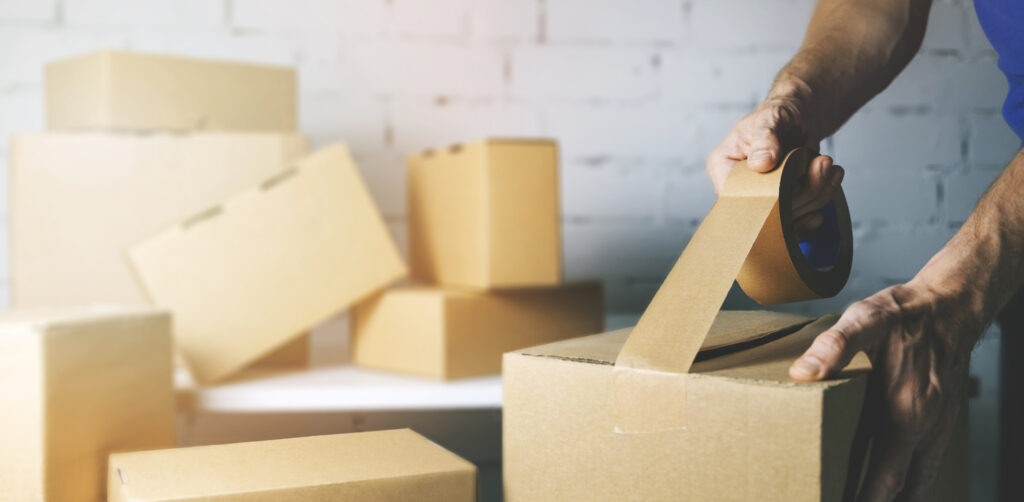-
Returns Management: Are You Not Making Money on Returns?

Returns Management Returns management remains a vital part of today’s supply chain processes. According to data shared by Vue.AI, “more than 60% of online shoppers say that they look at a retailer’s return policy before making a purchase. When an e-commerce site says ‘no returns or refunds,’ it makes a shopper nervous and less likely to trust the retailer (Ravishankar and Rao).”
It’s not enough to hope customers don’t return products; they will. Today’s supply chain companies need to make money on returns. Unlike the forward view, reverse logistics follow the opposite process. This unique point of origin leads to possible damage to the bottom line and challenges in supply chain management.
Further, depending on the product, it may be necessary to recycle, restock, reuse, or retire (properly dispose of) each returned item. That’s a tall order to meet. Understanding such processes begins with understanding the facts of the reverse logistics meaning and process, its common mistakes, and a few best practices for maximizing their value.
Reverse Logistics and Returns Management Are an Opportunity for Profit.
Returns management and reverse logistics have become crucial components of any company’s business strategy. Of all the supply chain trends, finding ways to enable true optimization remains elusive. In that realm, better returns management is still far from a reality for many e-commerce companies. With returns accounting for 30%, reselling returned products on secondary or export markets can help offset losses and expand market share.
Even more importantly, returns rates have hit their highest in the 2022 holiday shopping season. According to industry data experts, “Salesforce reported a 63% spike in returns during November and December, year over year (Ravishankar and Rao).”
Not only does this mean lost profit is recouped through returns generated from the secondary markets, but it also means an enlarged pool of potential customers in places that may not otherwise have been accessible. Embracing returns as part of a company’s plans can increase revenue while growing market share and securing a more secure end-to-end supply chain process.
Common Mistakes in Returns Management.
Companies make a few common mistakes when handling returns processes and identifying strategies for a more successful reverse logistics operation. These issues include:
- Not having a dedicated logistics team causes delays and inefficiencies in processing returns. It also creates an additional workload for other team members, leading to increased customer dissatisfaction.
- The lack of trackable return shipping options leads to difficulty tracking returns and can also make it difficult for the company to keep track of returns. This causes frustration and potential lost or misplaced returns for customers.
- A proper reverse logistics process must be clarified for handling returns and creating other missteps in downstream processes, including restocking.
- Failing to create a system for identifying and documenting defective products makes it difficult to track the source of defects and also makes it difficult to identify patterns or trends in defects.
- Having a plan for dealing with overstock or excess inventory from returns results in unnecessary costs for the company and makes it challenging to manage inventory levels.
Best Practices for Returns Management.
Following best practices for returns management is essential for businesses to create a streamlined, cost-efficient operation. However, the strategy behind reverse logistics isn’t always about managing inbound flows. Instead, it should consider recycling goods, reclamation of raw materials, and reuse cases, especially for e-commerce goods. Still, a few additional best practices transcend these “r’s” of reverse logistics and return management. These best practices include:
- Dedicate a logistics team to manage returns. A dedicated team ensures all returns are handled quickly and efficiently, including packaging or other kitting processes to ready items for resell.
- Provide customers with a trackable return shipping option. Providing real-time information on the status of their product’s journey reduces complaints.
- Develop and implement an effective reverse logistics process. Tracking data minimizes the cost and environmental impact of returns processes.
- Create a system for identifying and documenting defective products. Knowing what’s working will help to avoid costly errors or discrepancies down the line.
- Establish a plan for dealing with overstock or excess inventory from returns. A method for every possibility will aid in decision-making based on data insights.
- Ensure adequate communication and customer service during the returns process. Transparency and communication improve customer satisfaction and loyalty.
- Regularly review and update return policies and procedures. Regular updates and changes to operations are essential to supply chain optimization and keep your returns strategy ahead of the competition.
Boost Returns Management Processes With ModusLink.
Today’s consumers have the ultimate power of choice and the power of the purse. If a product doesn’t meet their expectations, or even if they simply decide they dislike it, shippers need to have a clear strategy for handling returns management. That’s the only way to avoid the inevitable backlash associated with zero or poor returns policies. Fortunately, working with a 3PL can help you understand your opportunities and threats within returns and what’s needed to succeed. Choose ModusLink, and don’t sweat the details of returns management. Connect with a ModusLink expert to get started now.
Bibliography
Atkinson, Helen. “Sick of Returns? Use Them to Drive Brick-and-Mortar Buys.” Supply Chain Brain, 17 January 2023, https://www.supplychainbrain.com/articles/36426-sick-of-returns-use-them-to-drive-brick-and-mortar-buys. Accessed 17 January 2023.
Ravishankar, Shyam, and Abhirami Rao. “20 Biggest E-commerce Challenges in 2023 + Simple Solutions.” Vue.ai, 5 January 2023, https://vue.ai/blog/ai-in-retail/ecommerce-challenges-in-2021/. Accessed 16 January 2023.
Disclaimer:
Content is the opinion of ModusLink Corporation and is not intended to act as compliance or legal advice.
.
-
Benefits in Finishing Packaging and Distribution Near Customers

warehouse order picker packing and sealing cardboard box with tape for dispatch As shippers and importers, there are many factors to consider when packaging and shipping products. In e-commerce, variety and agility are core to success. That includes packaging and distribution resources. It’s your role to figure out to reoptimize efforts and reduce costs. That’s a basic premise in any supply chain optimization strategy. Of course, it’s difficult to understand the importance and how packaging can influence operations on a global scale when rates are still so unstable.
Consider this. Despite declines in the shipping industry, rates are still higher than average, putting new pressure on packaging and distribution strategies. According to Reuters’ data sources, “long-term contract rates finished 2022 about 20% lower than the pandemic peak of more than $8,000 per container. [And] maritime consultancy Drewry […] expects contract rates to halve in 2023. That forecast would put rates at about $3,200 versus the pre-pandemic rate of around $1,500 (Baertlein).”
Rates at this level are simply inefficient globally, meaning that shippers should rethink their packaging and distribution strategies. Specifically, finishing product packaging closer to end users will yield significant benefits and opportunities. Here are the top benefits of such a strategy.
1. Leverage Bulk Packaging Solutions to Get Lower Costs.
Companies looking to reduce their packaging and distribution costs should consider bulk packaging solutions. Bulk packaging is typically sourced from packaging distributors that partner with various manufacturers. This allows them to provide clients with a wide selection of packaging materials and design options. Packaging distributors buy in bulk and save money on packaging costs. Thus, businesses can often save significantly more than they would on their own.
2. Improve Flexibility to Create Brand or Region-Specific Packaging.
Working with a packaging supplier to improve flexibility and create multiple packaging designs tailored is an advantage. Imagine building packaging to target specific brands or regions. Plus, packaging customization allows for unique packaging formats that help the product stand out from its competitors. For brands in highly competitive industries, custom packaging presents the possibility of increased visibility, eventually leading to higher sales. Custom packaging also makes it easier for companies to incorporate their branding messages into the packaging design, defining their presence in the market.
3. It Enhances the Optimization of Resources.
Optimizing packaging and distribution is essential to increase efficiency and minimize costs. Understanding the packaging and distribution process can help businesses save more resources, enabling them better to adjust their resources for a more significant impact. This includes reducing resource requirements across departments within your organization. Plus, knowing and understanding your global fulfillment footprint is invaluable to running a successful business
Streamline Finishing in Your Packaging and Distribution Strategy With ModusLink.
Doing more with less will always be paramount to supply chain management. Today’s shippers and global trade parties need to understand the vital benefits of finishing closer to consumers and how that translates into improving their manufacturing and distribution networks. The right packaging system and strategy take advantage of this fact. ModusLink can help you utilize these benefits to optimize your packaging and distribution process. Request more information on how ModusLink can reposition your finishing strategy for success to get started.
Bibliography
Baertlein, Lisa. “Analysis: Some ocean shipping rates collapsing, but real price relief is months away.” Reuters, 9 January 2023, https://www.reuters.com/business/retail-consumer/some-ocean-shipping-rates-collapsing-real-price-relief-is-months-away-2023-01-09/. Accessed 17 January 2023.
Disclaimer:
Content is the opinion of ModusLink Corporation and is not intended to act as compliance or legal advice.
.